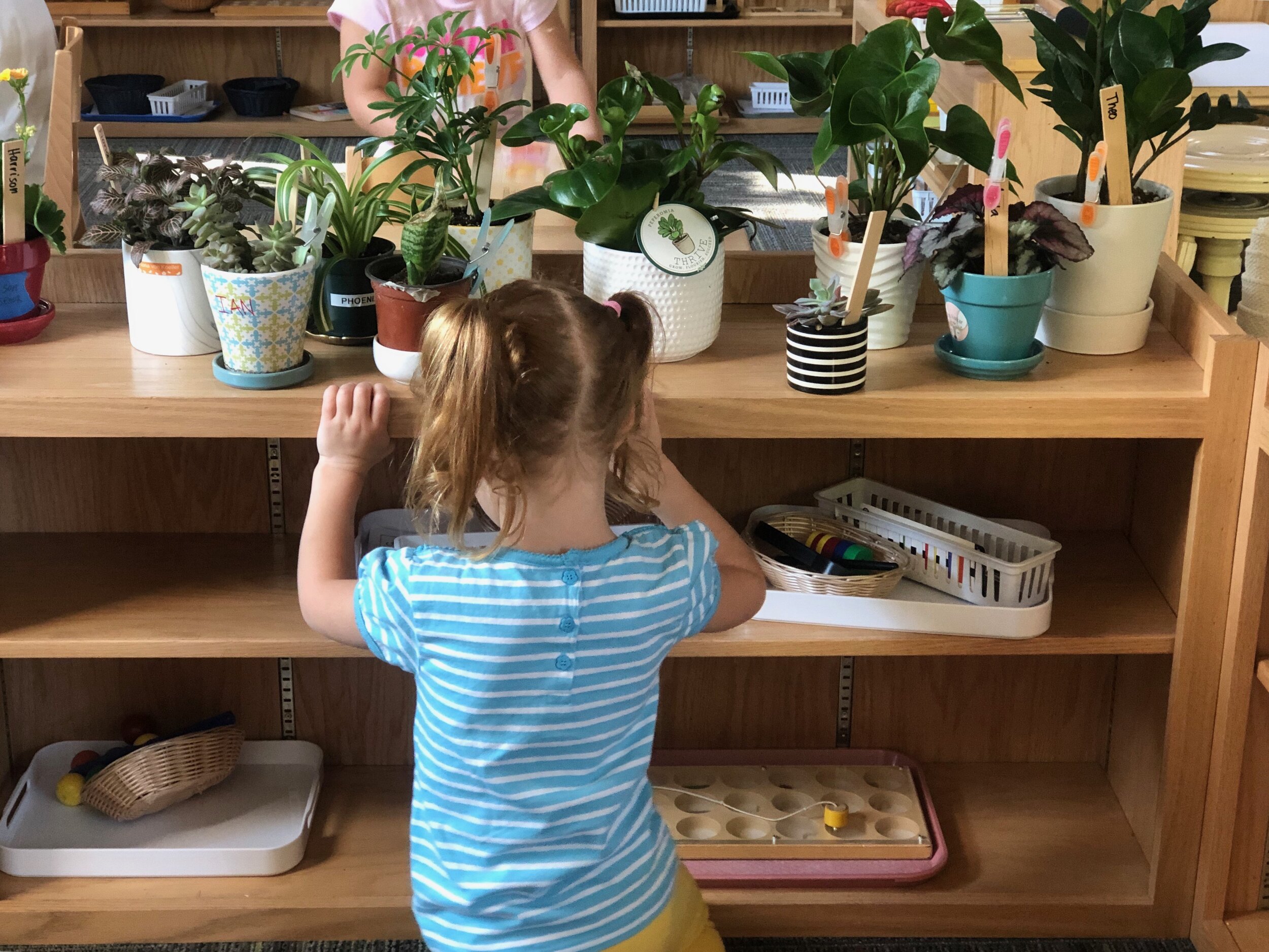Time In’s, Fences and Freedoms and Why Time Outs Don’t Work
Often times, a child who isn’t following your guidelines or making appropriate choices, is a child who is screaming out for help. Children thrive on rituals, routines and boundaries. Boundaries help a child to feel safe - they let them know that the adult who is there to take care of them has figured out all the hard stuff - they make the big choices and give them direction, so that they don’t have the weight of those big choices on their own.
A child has a routine each morning when they arrive at school. These are non-negotiations.
Sometimes even the smallest things (in our adult minds) can be overwhelming to a child. This is why people are always hearing of giving a limited selection of choices - yes, you can pick out your outfit for today, but not from your entire wardrobe - from these three options. This is why in Montessori - we refer to our teaching style as “Freedom within Limits.” Sure - there are many choices and many different activities to do and things to learn about - but within a highly curated (the “prepared environment”) classroom. So, nothing is available that we don’t want a child to be doing.
This is the same for any other situation. The adult again, “highly curates” the situation for a child - this is called scaffolding. We put into place the supports a child needs us to, so that the child can make a positive choice.
The idea of fences and freedoms was taught to me by Lynne Griffin, who is one of the most influential people in my life. Fences are the boundaries we provide for a child - and the freedoms are the choices within those fences. If a child is still struggling even with the fences and freedoms we’ve put into place for them - that is a sign that it is still too much. That fence gets a little bit smaller and those freedoms become a little bit less. As a child grows and matures, we open everything up bit by bit.
Older students have a work plan - this is something they must accomplish during the school day.
Montessori teachers often utilize the idea of “time ins.” A child who needs a little extra guidance may need a little extra connection. Outside of the hot moment, try to make a connection with a child, offer them a time in. Instead of sending them away from the situation - invite them into it. Show them how to play appropriately, maybe they are your partner for a little while and you can stand with them and observe about what a good choice may be. Maybe they need a little bit of help understanding what the expectation is. A rule a Montessori teacher lives by is never assume a child knows what to do. We are here to guide them.
A child chooses an activity from a curated selection of choices.
Time Out’s don’t work. They aren’t effective. They are casting a child away to sit and sulk by themselves instead of inviting them in and demonstrating what a better choice for the situation may have been. Its taking a child who is yelling for fences and throwing them out of the yard to fend for themselves. If you have a child who laughs or plays or doesn’t care they are in time out - it is not a show, they actually don’t care because they don’t get it. Time outs offer no scaffolding, time in’s give a child what they need.
I think we are all learning that approaching a situation with a little more love, a little more understanding and little more connection can make a world of difference. Let your child know you care for them by and while you are putting a boundary in place. Instead of “hey, sweetie don’t do that you silly goose” maybe saying “I can’t let you hit your friend” will deliver the kind of kind but firm message your child is shouting for.
Time Worthy Reads:
“Why Montessori Teachers Don’t Use Time Outs” by Christina Clemer
https://www.mother.ly/child/the-montessori-way-to-get-your-child-to-behave
“If Gentle Discipline Isn’t Working, This Might Be the Real Reason” by Janet Lansbury
https://www.janetlansbury.com/2012/10/if-gentle-discipline-isnt-working-this-might-be-the-reason/
Negotiation Generation by Lynne Griffin, RN, Med
https://www.amazon.com/Negotiation-Generation-Parental-Authority-Punishment/dp/0425217019


